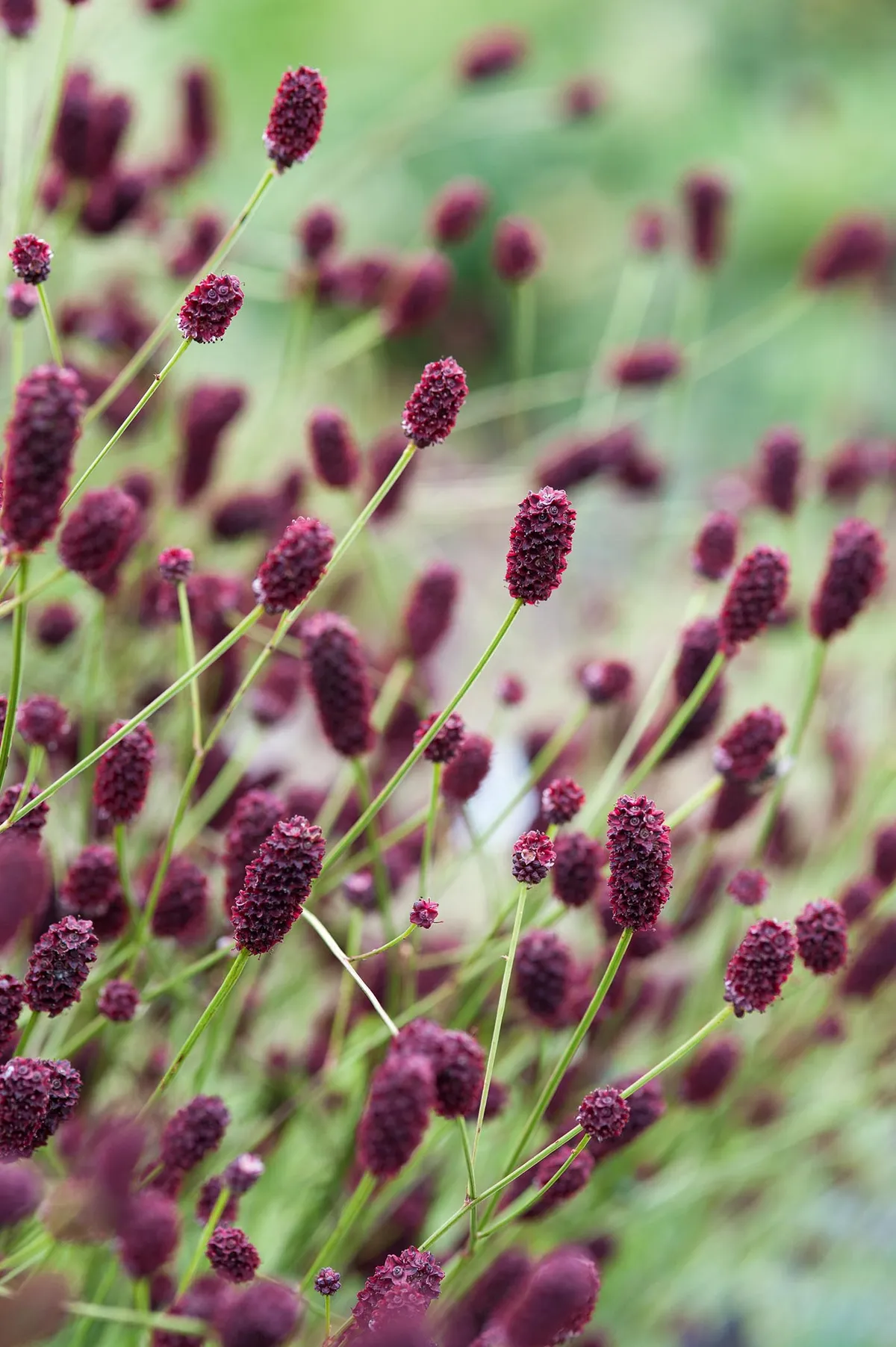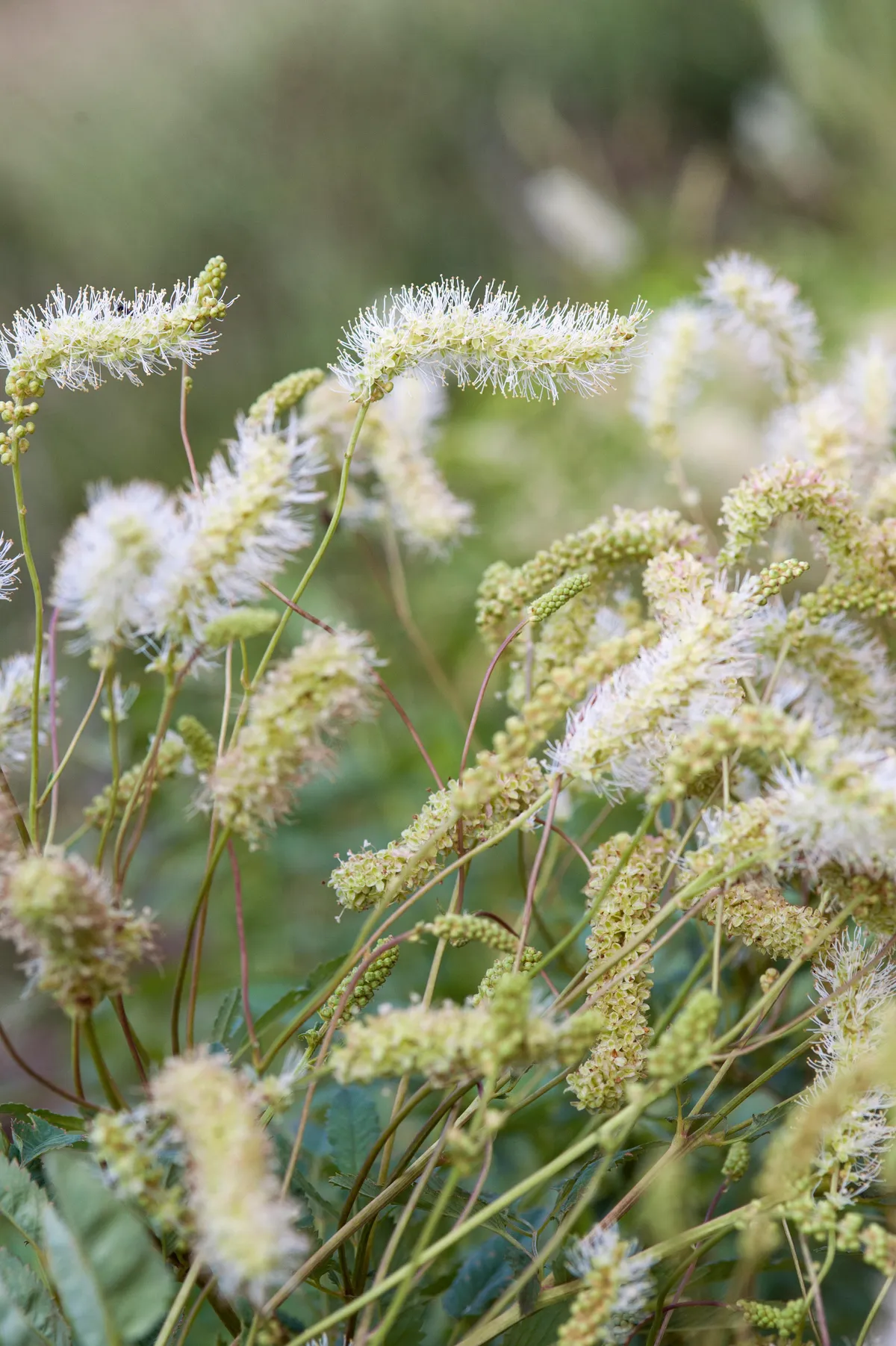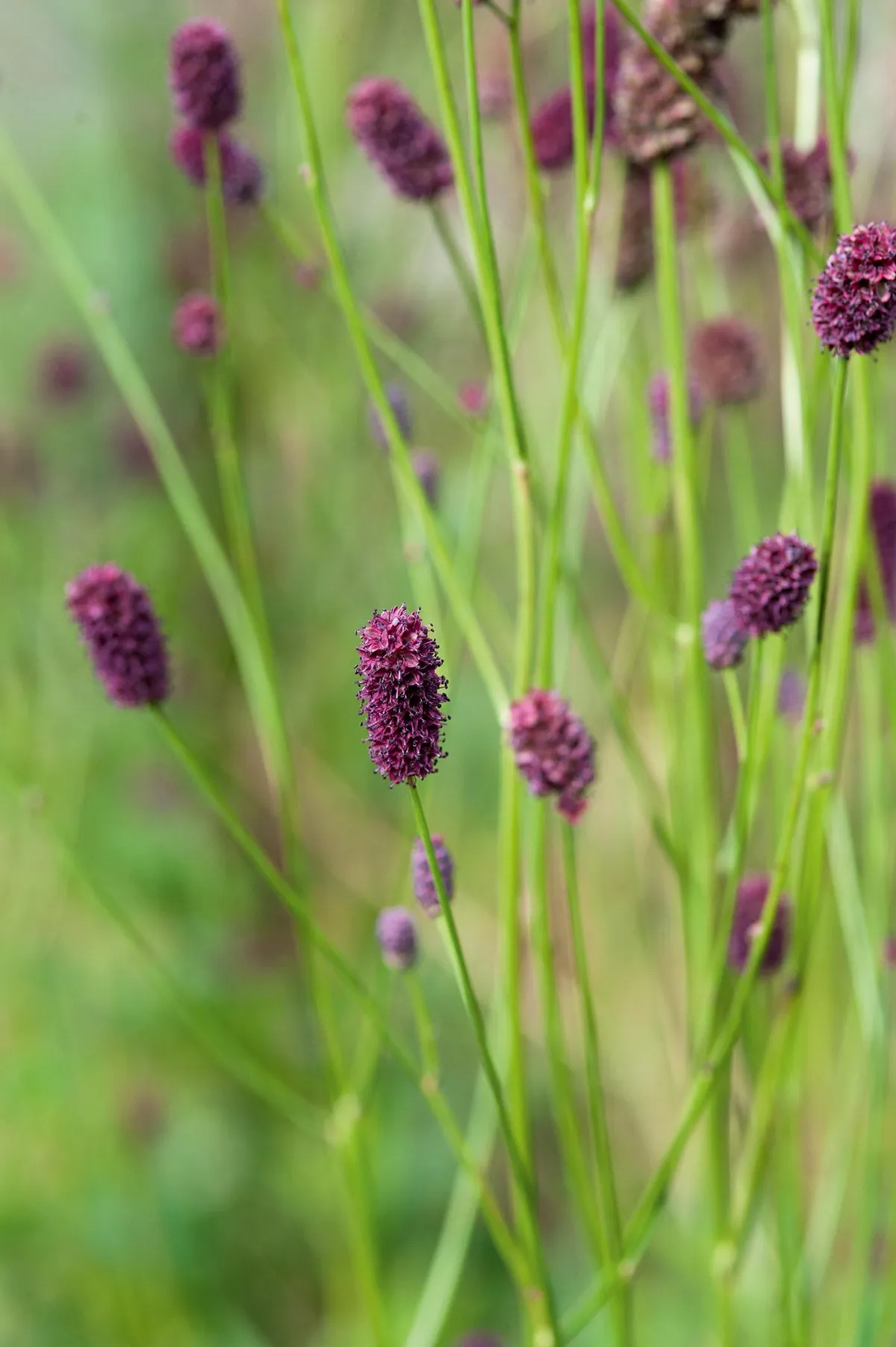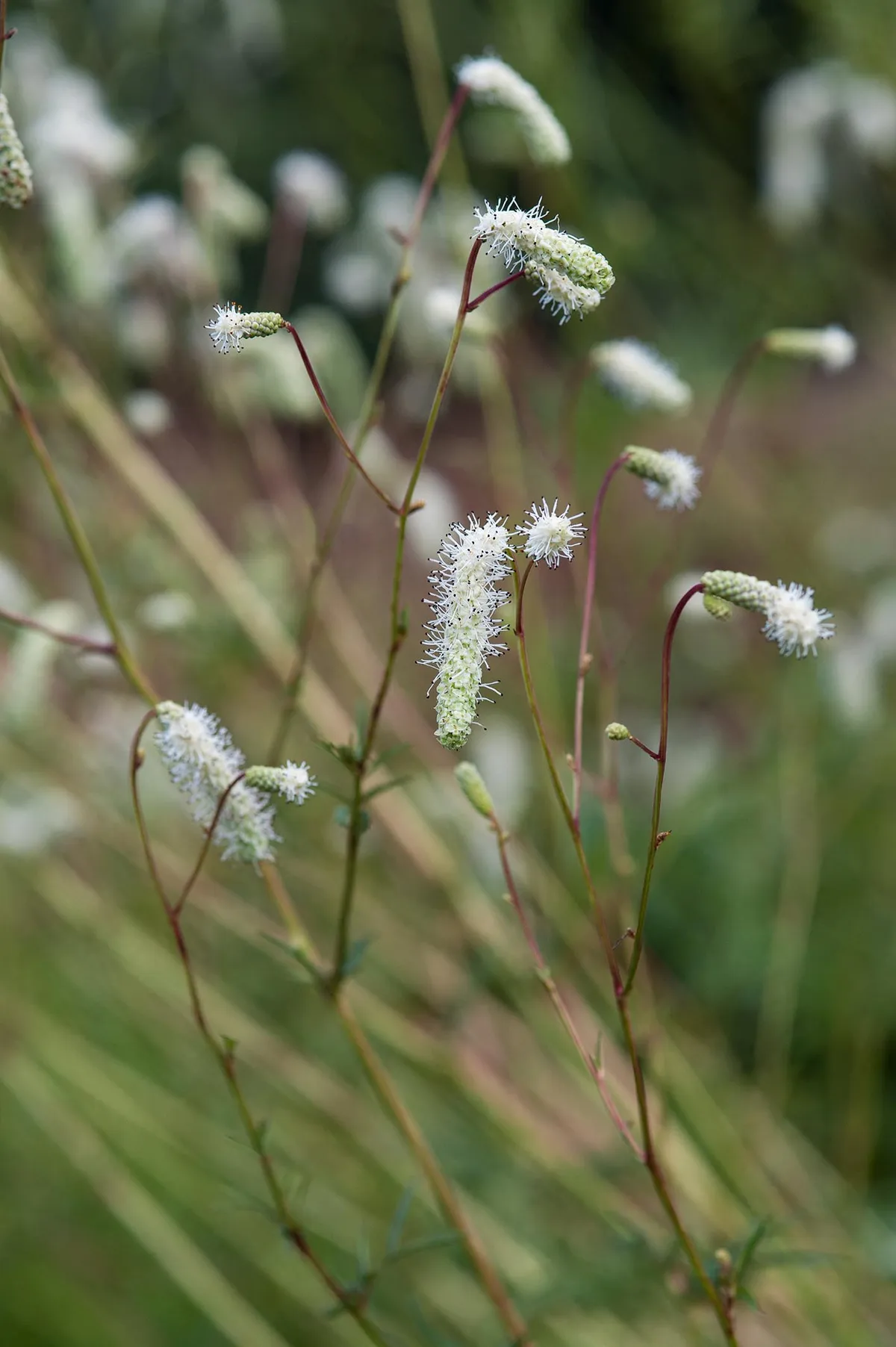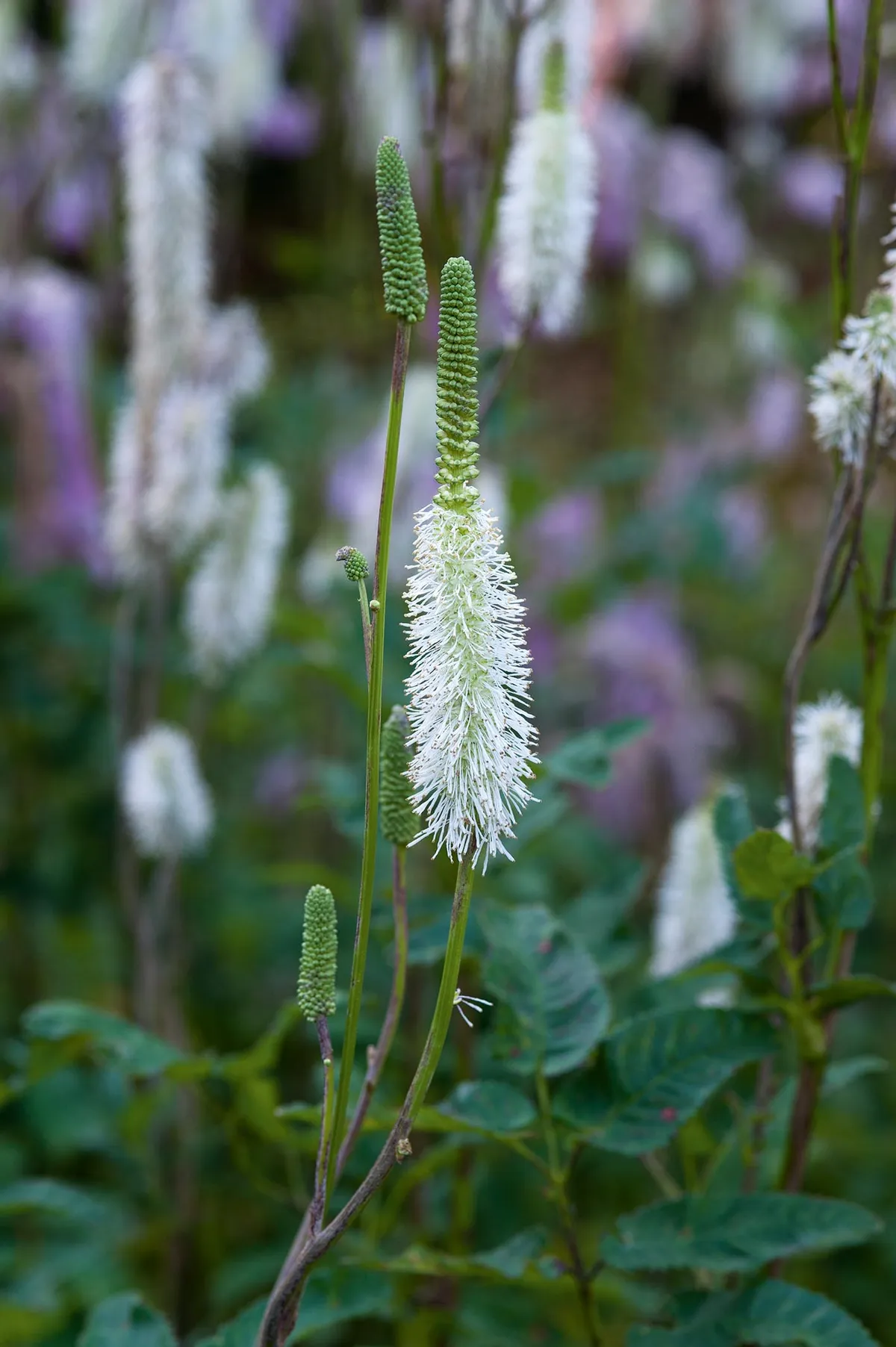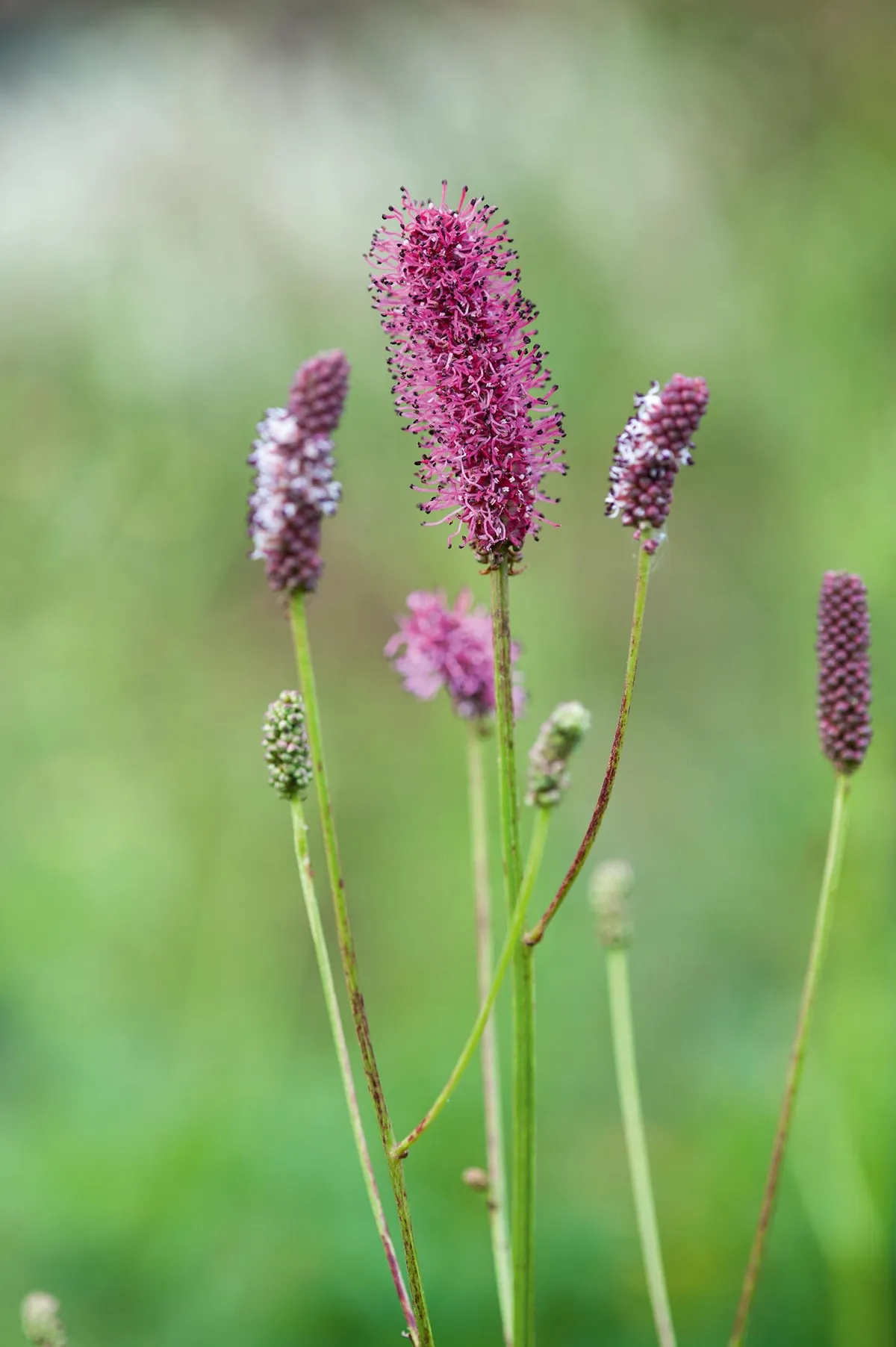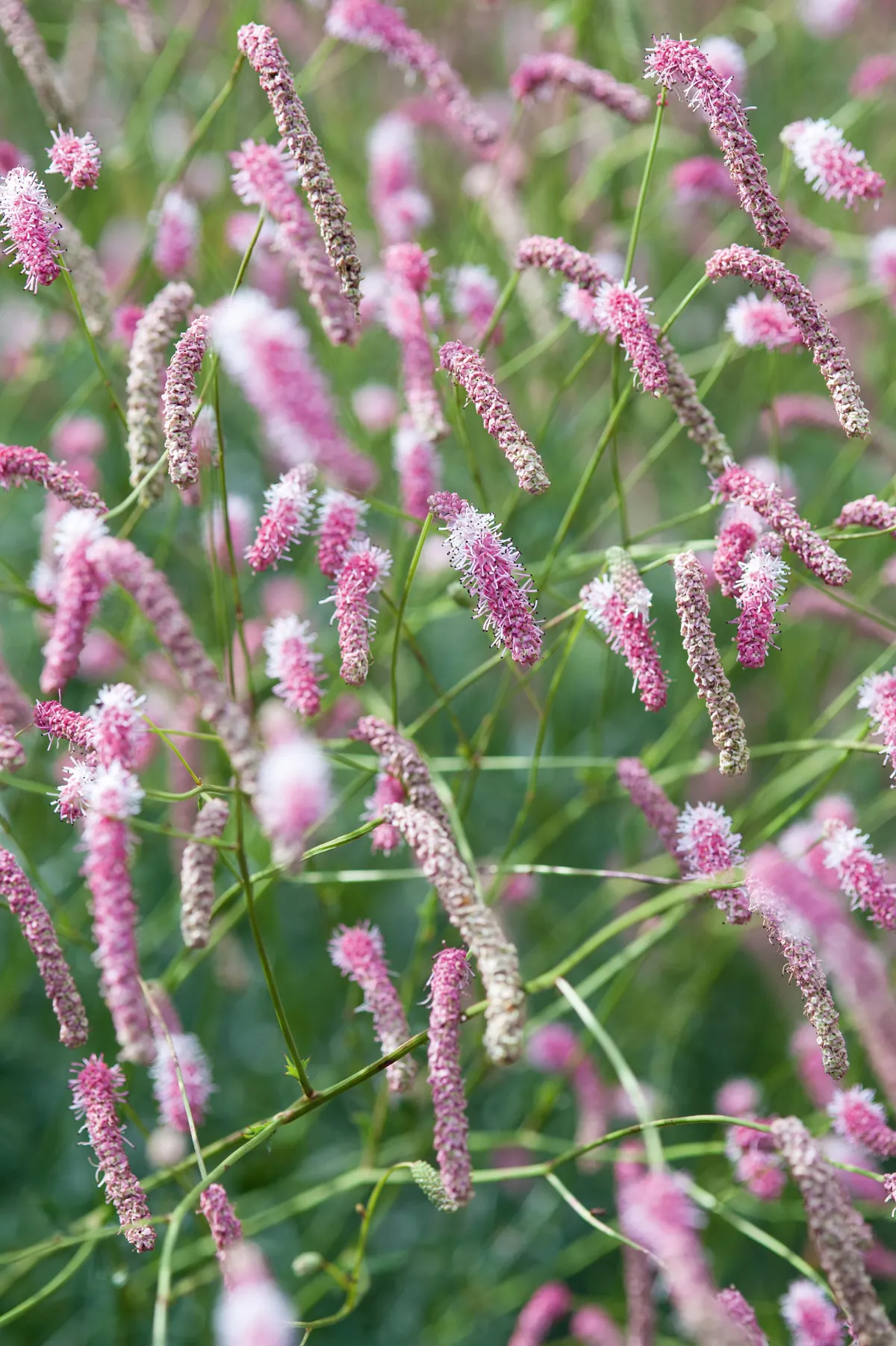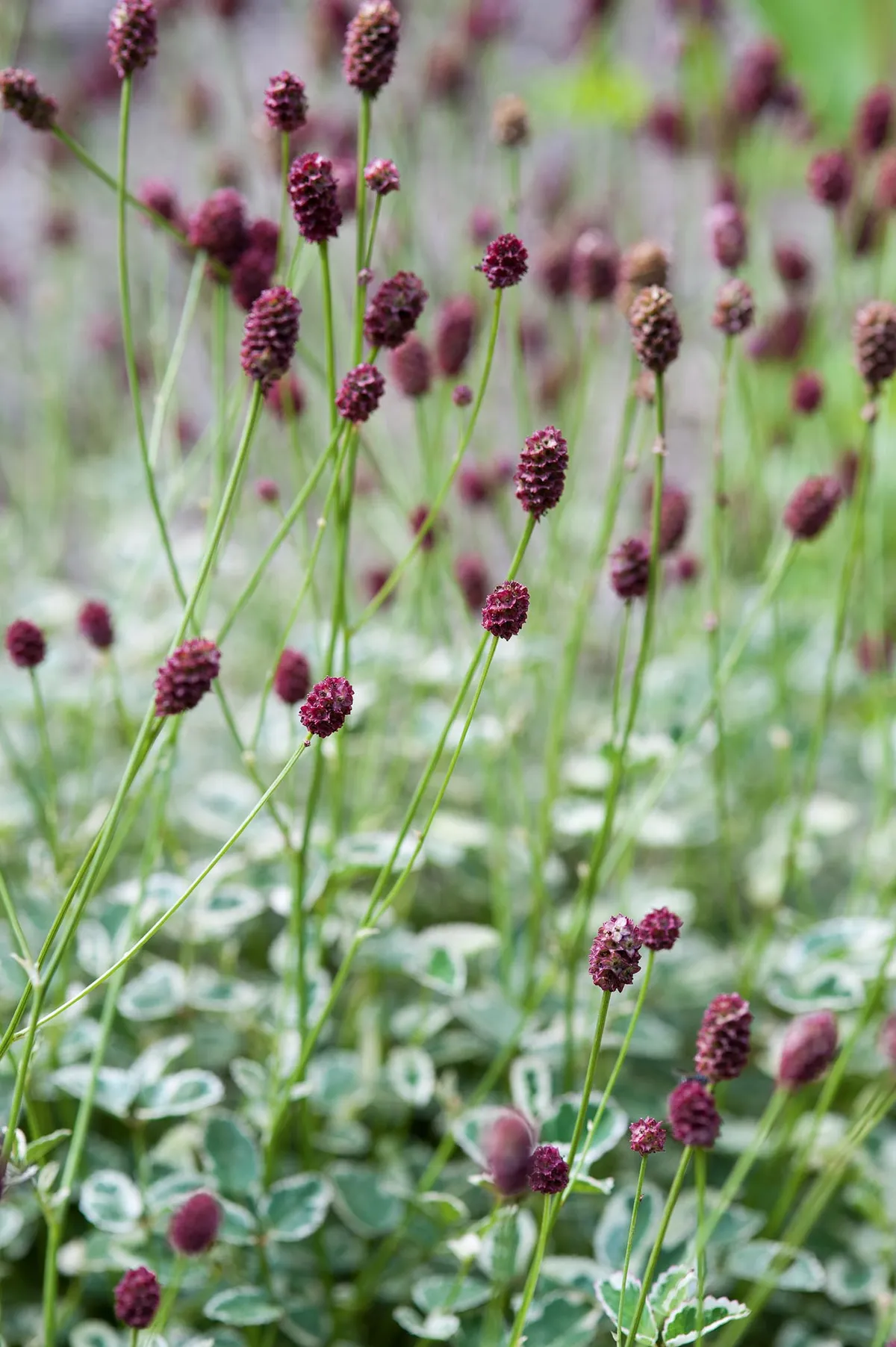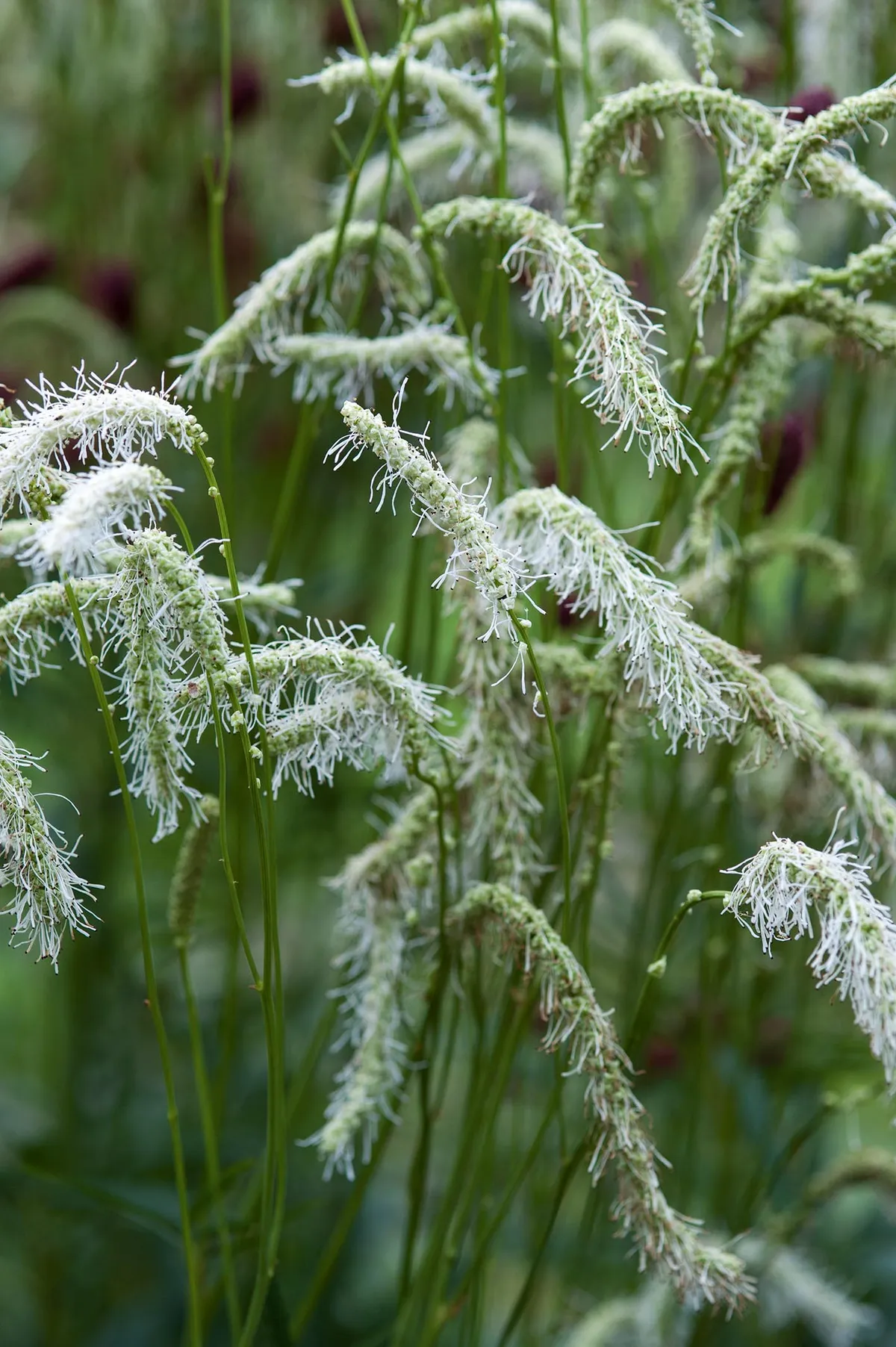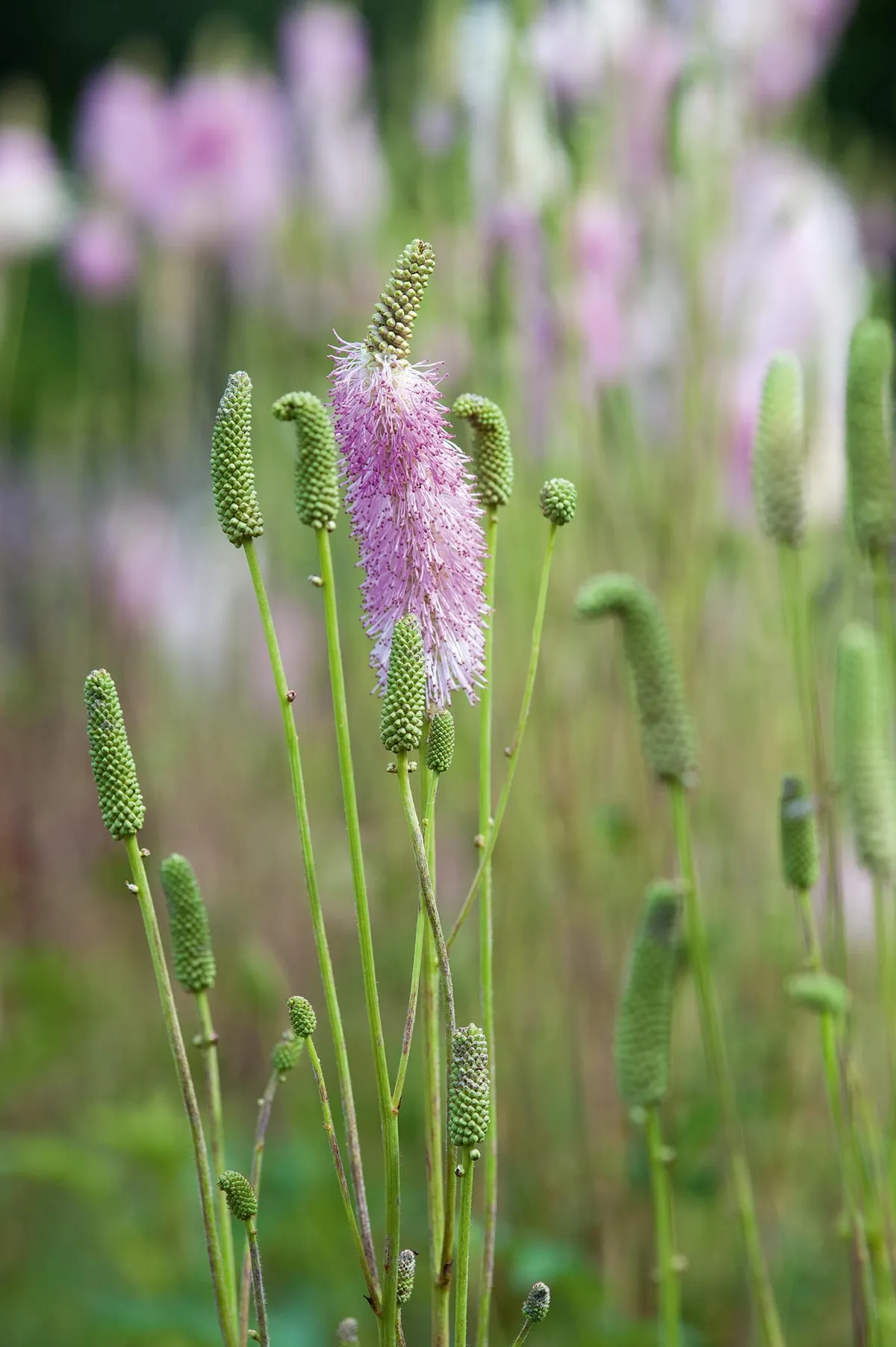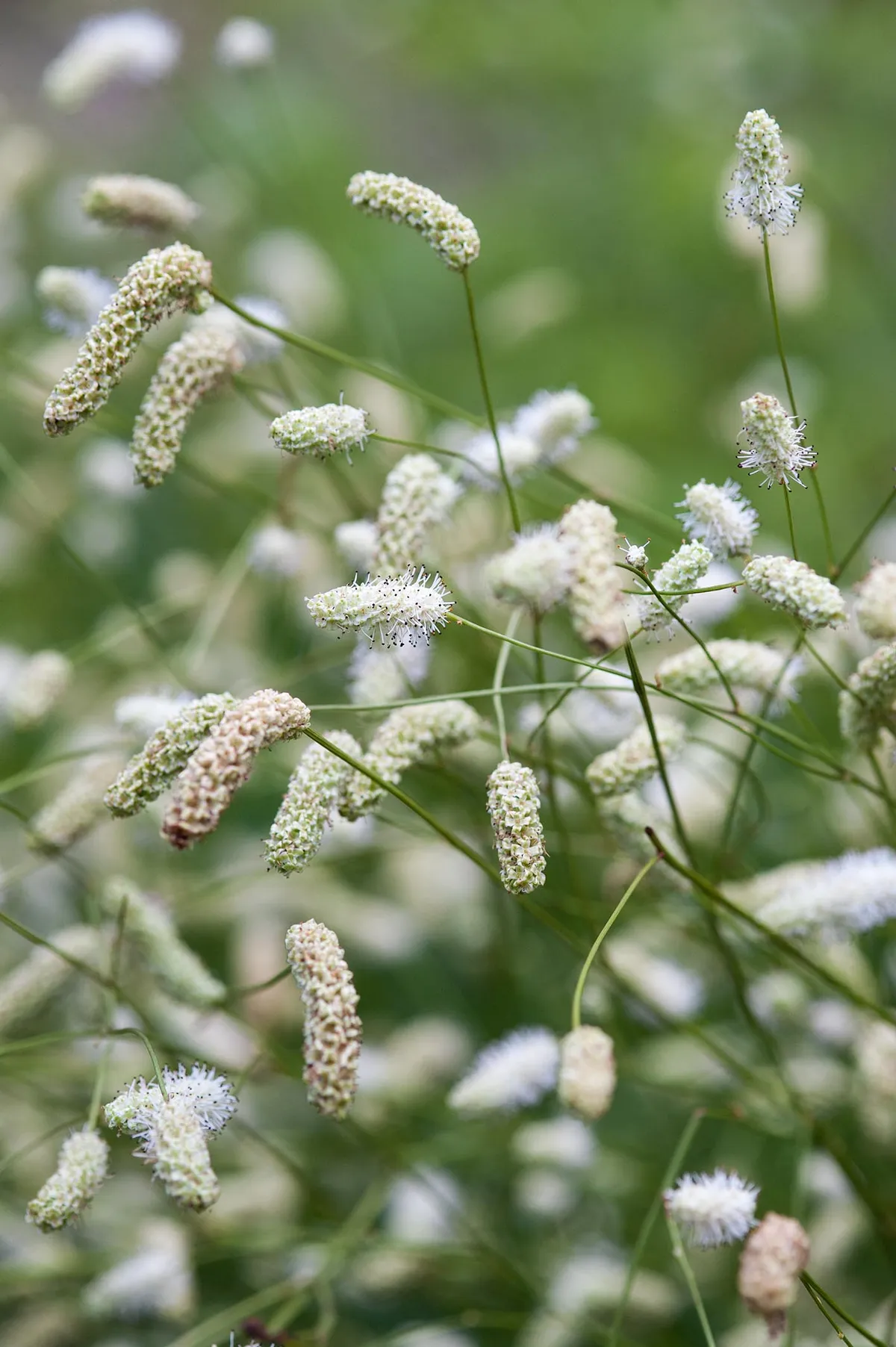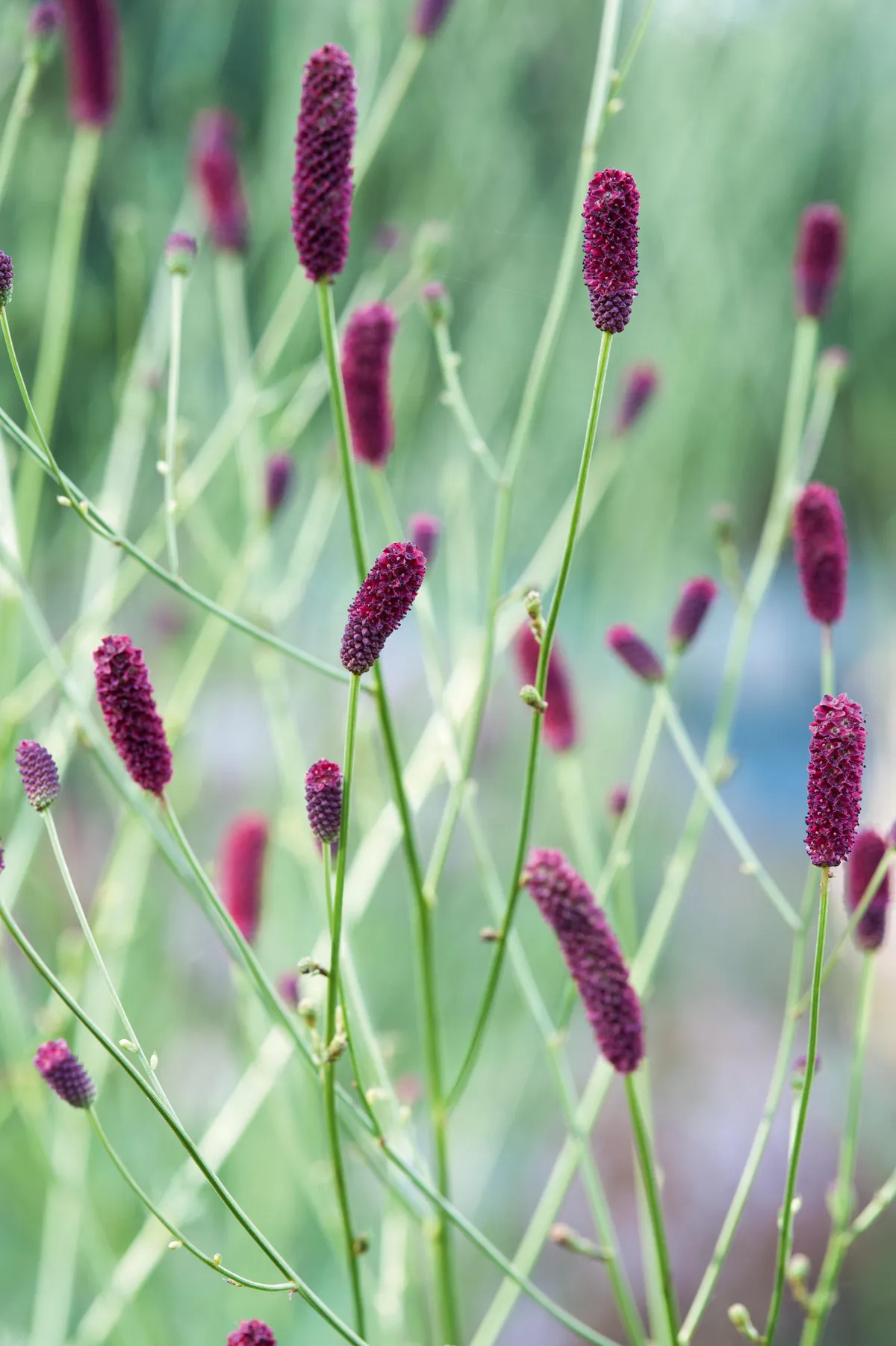Once, while wandering over the chalk downs of Box Hill in Surrey, I noticed the delicate scent of cucumber. On inspection of the ground beneath my feet I discovered I was standing on a diminutive pinnate-leaved plant that had small, globular, greenish-red heads with long straggly stamens: the salad burnet (Sanguisorba minor).
This was my first encounter with one of the two British native burnets. The other, the great burnet (Sanguisorba officinalis), prefers moisture-retentive soils in meadows or at the edge of woodland. It is much taller at 1.2m with small, burgundy bobbles atop wiry stems.
Burnets are found throughout Europe, Asia, Japan and North America. They are particularly suited to naturalistic plantings, and different hybrids flower throughout the season from late April to November, although many of the popular garden cultivars are at their best from June to September. Many sanguisorba cultivars have good autumn foliage tints.
As all species and hybrids readily hybridise, these features get thoroughly mixed up in the resulting progeny. Growing several different burnets in close proximity has produced some wonderful hybrids such as those at Sussex Prairies where substantial specimens of Sanguisorba ‘Blackthorn’ with upright tapers of smoky pink flowers are cheek by jowl with other sanguisorbas and are likely parents to the Sussex Prairies hybrids: ‘Sussex Prairies Cheyenne’, ‘Sussex Prairies Navaho’, ‘Sussex Prairies Iroquois’ and ‘Sussex Prairies Apache’.
What is sanguisorba?
A group of hardy herbaceous perennials belonging to the Rosaceae family. They has pinnate foliage with toothed leaflet margins and branched wiry stems with terminal clusters of burrs, nodding catkins or candle-like flowers in white, green, pink, red and plum. Commonly known as burnets, there are around 18 species and thousands of hybrids.
The size varies from a few centimetres to 2.5m and most grow in moist grasslands with a few species from drier limestone habitats. Sanguisorba is ideal for UK gardens. Most have a hardiness rating of RHS H7 and are suitable for gardens in USDA zones 3a to 8b.
Below are plant expert Marina Christopher's advice on growing sanguisorba – plus her recommended cultivars.
How to grow sanguisorba
Where to plant sanguisorba
Sanguisorba grows best in moist but well drained soil, in full sun or part shade. In dry weather plants look great; in wet conditions they can look a little bedraggled.
The different shapes and forms of sanguisorba flowers work well in meadow and naturalistic planting schemes as well as in herbaceous borders. Tall grasses and perennials are enhanced by spots of colour that appear to hover around them on wiry stems.
One nurseryman has described Sanguisorba officinalis ‘Arnhem’ as ‘like a swarm of small raspberries’. The colourful dangling caterpillars of Sanguisorba hakusanensis, Sanguisorba hakusanensis ‘Lilac Squirrel’, Sanguisorba ‘Pink Brushes’ and Sanguisorba ‘Candy Floss’ are certainly not subtle.
Is sanguisorba invasive?
Many popular sanguisorba cultivars, such as the widely available Sanguisorba 'Tanna', form neat clumps. Sanguisorba obtusa can spread and become invasive.
When to cut back sanguisorba
The foliage of sanguisorba dies back in autumn and regrows again in spring, but the spent flowers can still look attractive if left on the plant over winter. Cut them back in late winter or early spring before the new stems appear.
When to divide sanguisorba
Divide sanguisorba in spring, when the plant is growing away quickly. The plant has a rhizomatous rootstock so make sure the each of the pieces has a shoot and piece of root attached. Replant where required, making sure to water in well. Use a sharp kitchen knife to divide plants rather than back to back garden forks, which damage the plant.
How to propagate sanguisorba
Sanguisorbas are easy to propagate by seed in spring or autumn. They often germinate erratically, but they are highly promiscuous and likely to seed around in the garden. The seedlings are likely to be hybrids. Interesting progeny may be produced but can vary hugely.
There is also a distinct possibility that seedlings may germinate within a named clump and compromise the original plant if they are more vigorous. This has happened several times with Sanguisorba ‘Tanna’, which is a diminutive floriferous form that should be no taller than 30cm. Many plants offered as Sanguisorba ‘Tanna’ are 60cm or more and are most likely to be hybrids.
Deadheading the spent flowers is one way of avoiding plants seeding around, but this denies insects and birds nutritious seed.
Sanguisorba problems
In general, sanguisorba does not suffer greatly from pests and diseases. Like strawberries, they are members of the rose family, and so are susceptible to vine weevils, which burrow into the rhizomes. However, this does not normally cause too much of a problem in a garden situation but is more severe with plants in pots.
Black spot is occasionally a problem on some hybrids and powdery mildew can take hold in dry conditions. If mildew is spotted early enough a good soaking with a seaweed feed can prevent further spread as can a dose of an environmentally friendly foliar feed and pesticide, such as SB Plant Invigorator. Deer and rabbits are particularly fond of eating sanguisorbas.
The best sanguisorba to grow
Sanguisorba ‘Blackthorn’
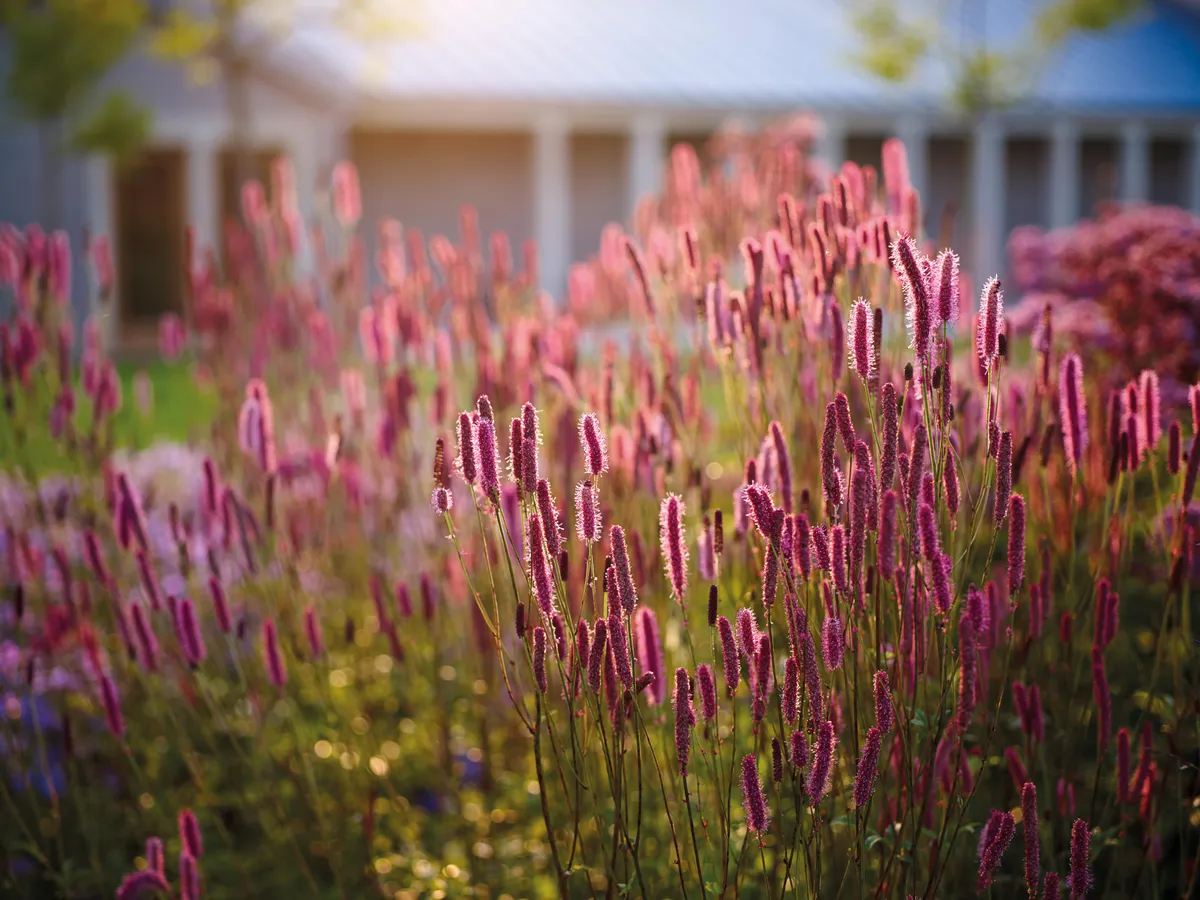
Smoky-pink candles atop robust, vertical stems. Flowers open in August remaining in good condition for weeks. A good parent for new hybrids as demonstrated by the Sussex Prairies tribe. 1.5m. USDA 4a-8b.
Buy Sanguisorba 'Blackthorn' from Eddington House Nursery
Sanguisorba dodecandra
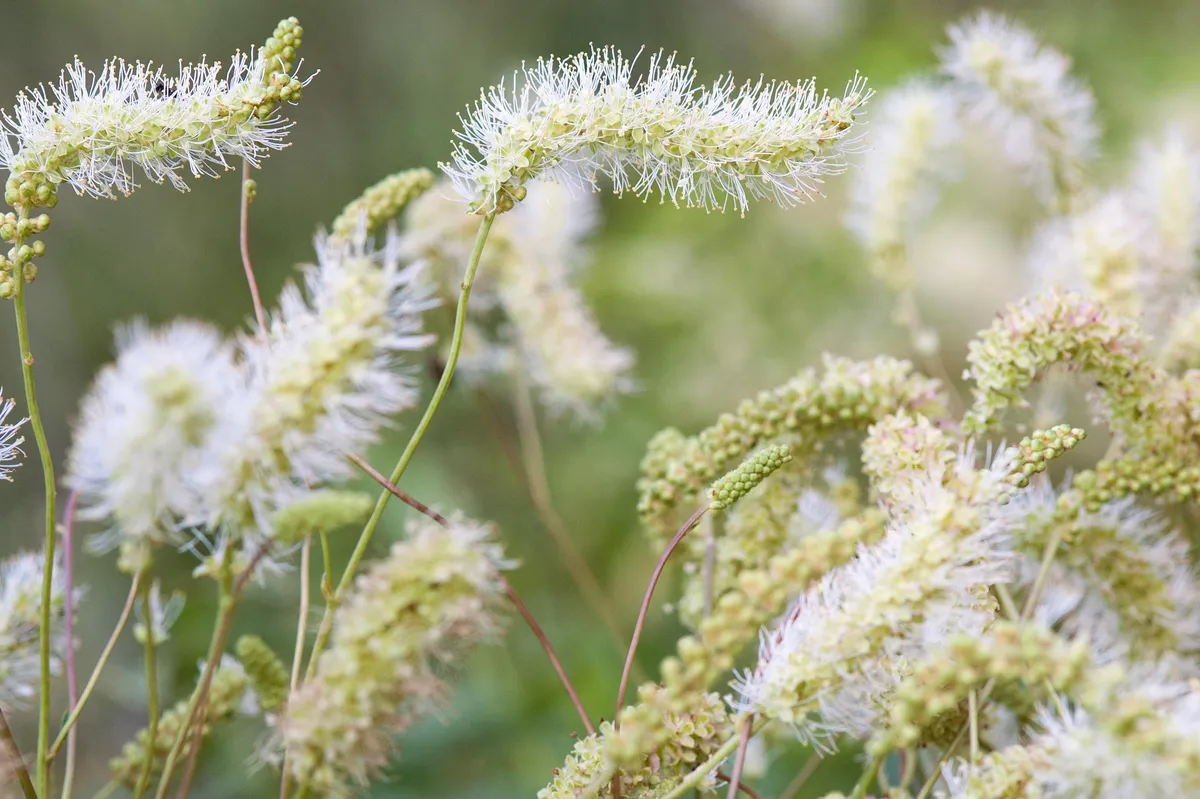
This is a distinct species with sweetly scented, unusually yellowish-green catkins and long, white stamens emerging from luminous yellow buds. It has glaucous foliage, red-suffused stems and a running habit. 1m.
Sanguisorba ‘Autumn Red’
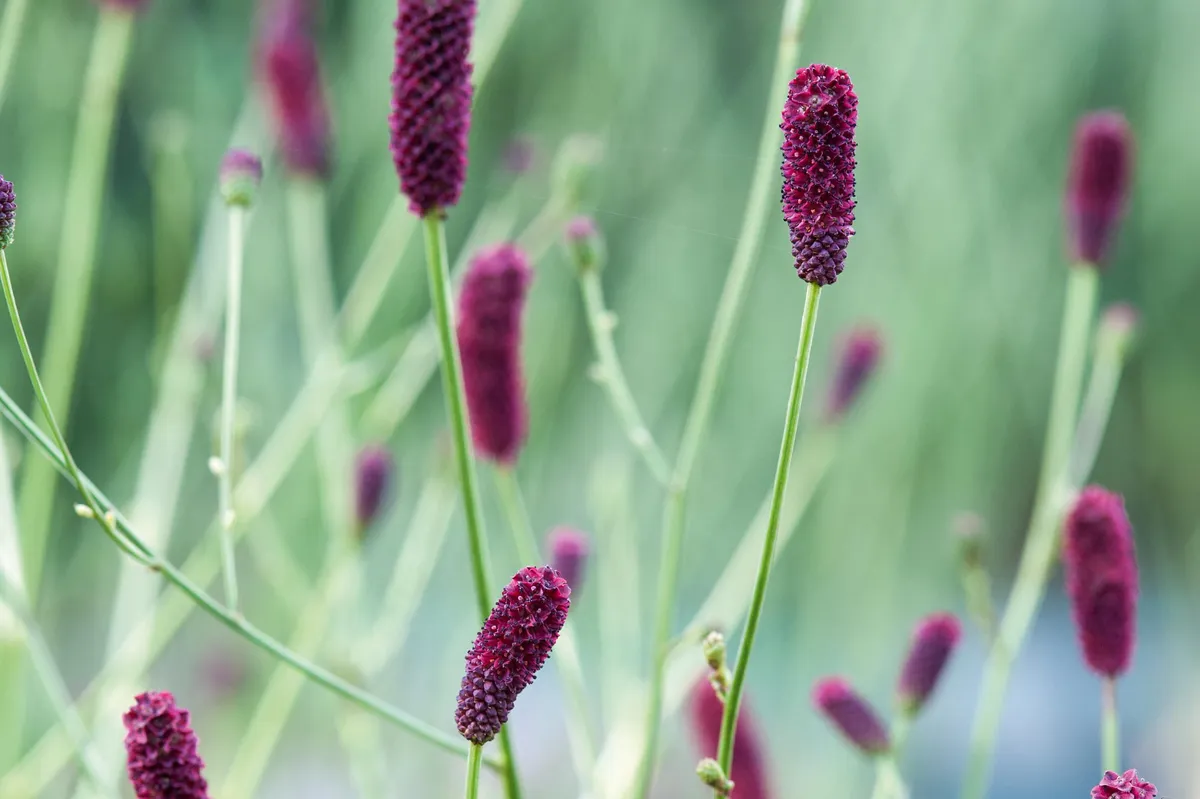
A robust, late-flowering cultivar with dark-red burrs. A great addition to the late summer border it will continue to flower right up until November and works well with tall grasses and perennials. 2.2m.
Sanguisorba tenuifolia ‘Stand Up Comedian’
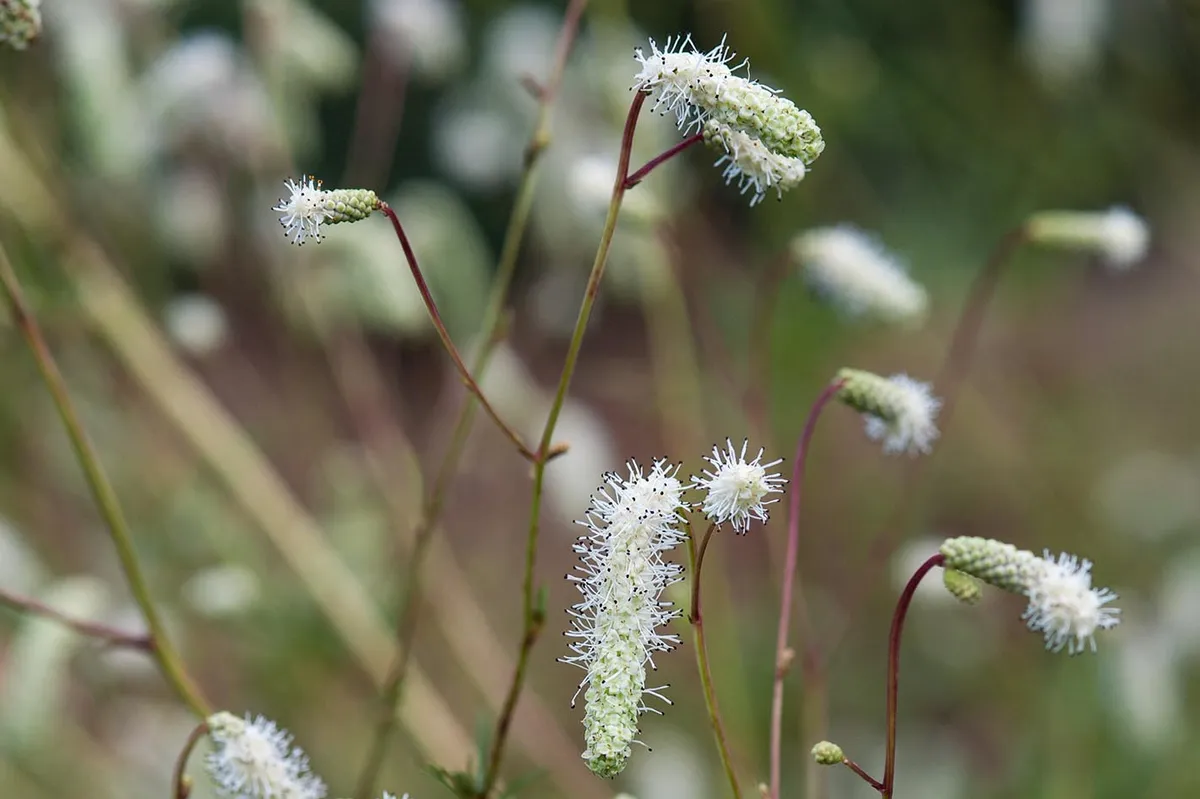
With a graceful, slightly arching open habit, its clean, white catkins are held above glossy foliage and strong red stems. Bees and hoverflies are attracted to the flowers. 2.2m.
Sanguisorba ‘Little Angel’
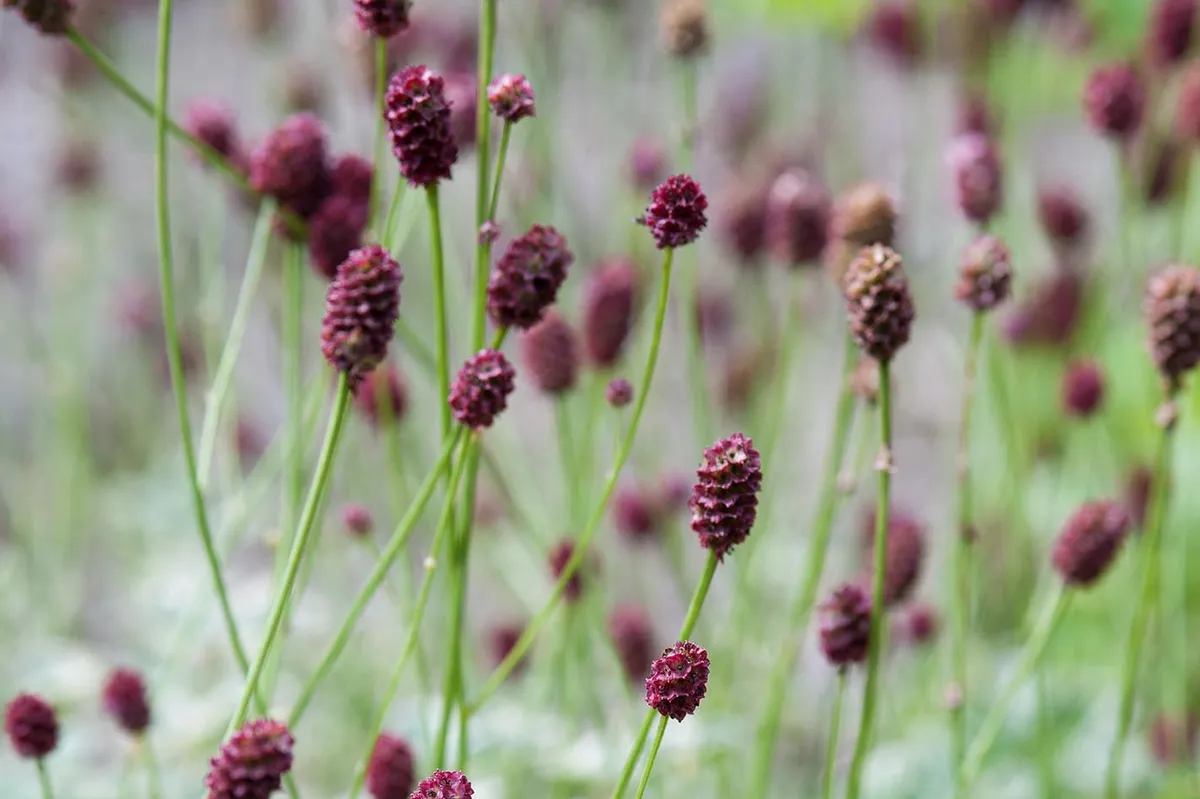
Prolific red buttons atop small, neat clumps of creamy white-margined foliage. Excellent for front of border or a container and not prone to reversion unlike other variegated cultivars. 30cm.
Buy Sanguisorba ‘Little Angel’ from Farmyard Nurseries
Sanguisorba ‘Sussex Prairies Apache’
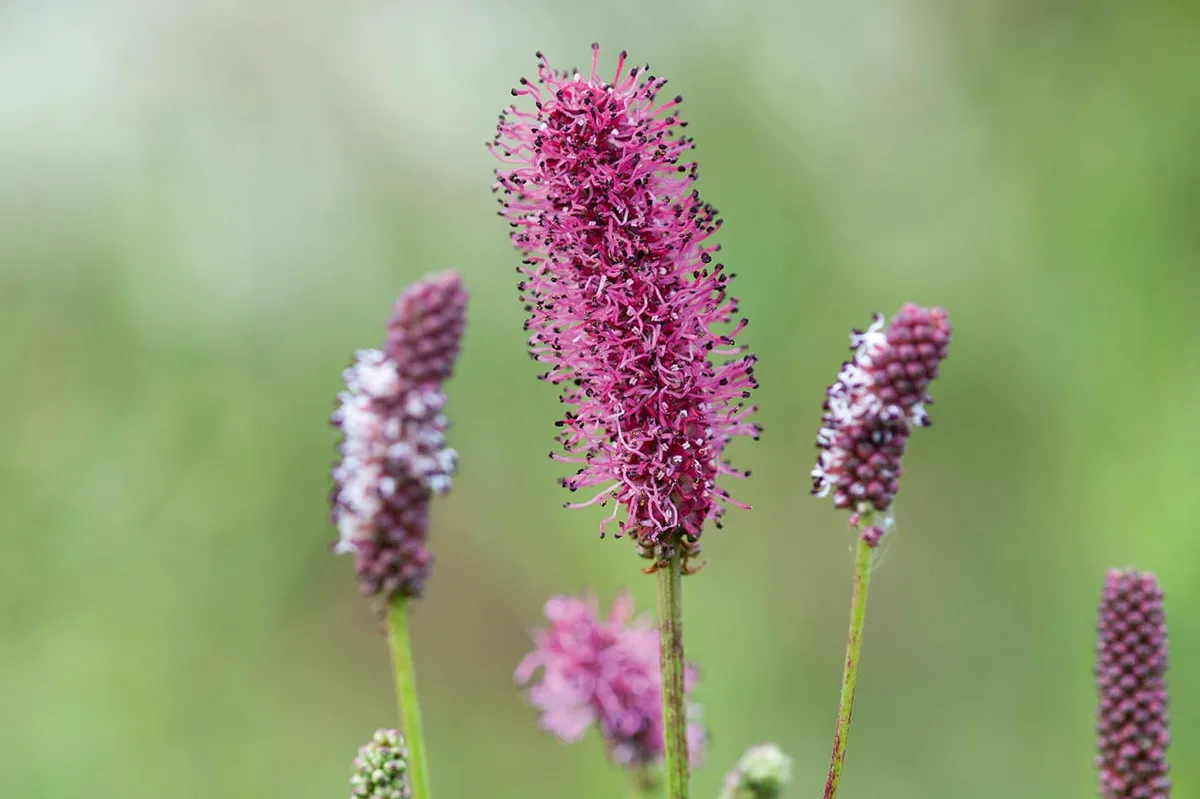
This upright hybrid, which probably has Sanguisorba ‘Blackthorn’ as a parent, has large, rich-pink catkins that age to white with compact dense bright-green foliage. 1.5m.
Sanguisorba canadensis ‘Twisty’
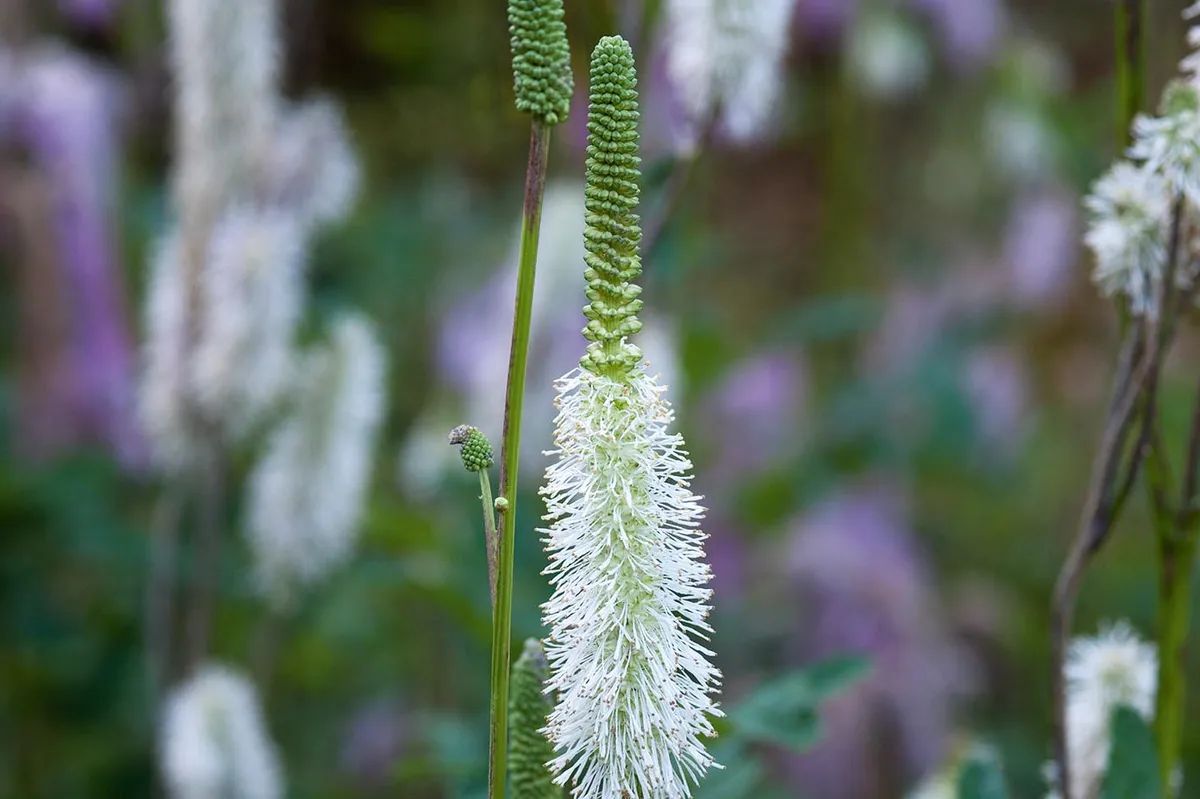
A hybrid of Sanguisorba canadensis with typical upright pristine white candles in late summer, and a distinctive bend in the flowering stem with striking red and yellow autumn foliage. 2m.
Sanguisorba ‘Burr Blanc’
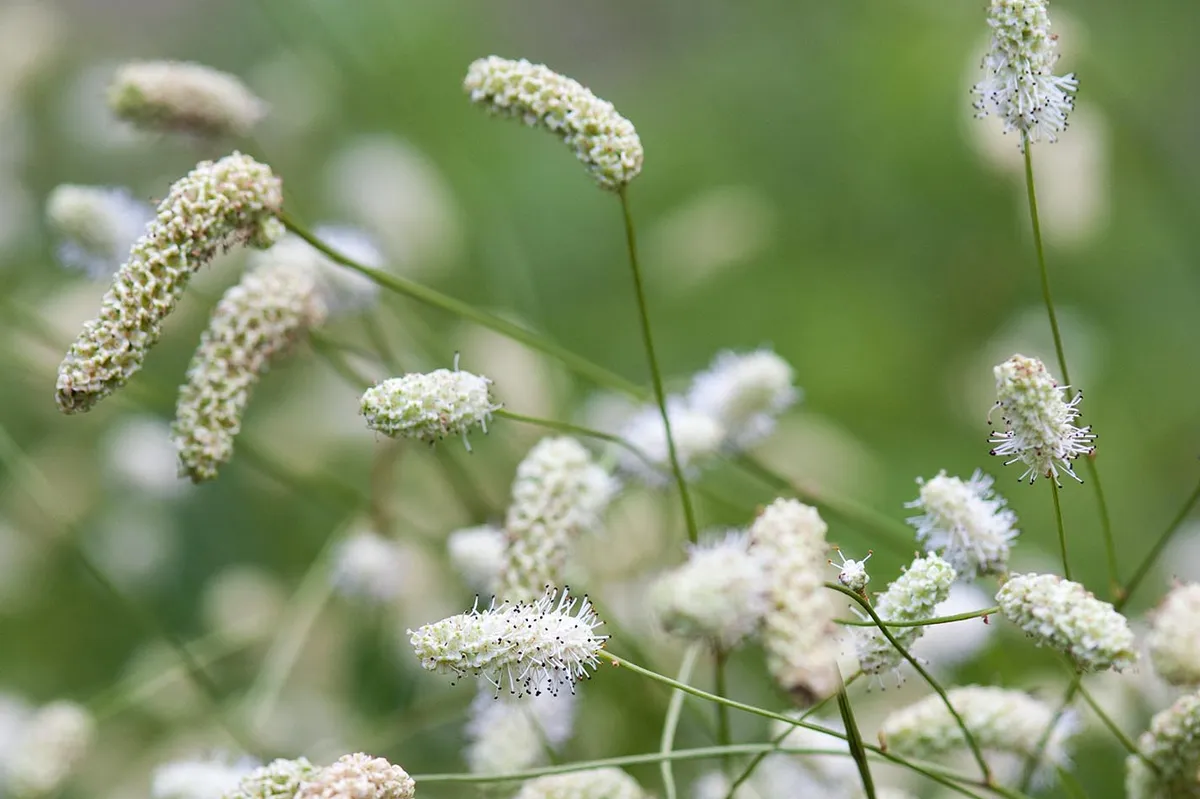
Selected by Graham Gough of Marchants Hardy Plants in East Sussex, this hybrid seedling of Sanguisorba tenuifolia var. parviflora has small, slightly nodding white burrs that stay in good condition for months. 1.2m.
Sanguisorba officinalis ‘Korean Phoenix’
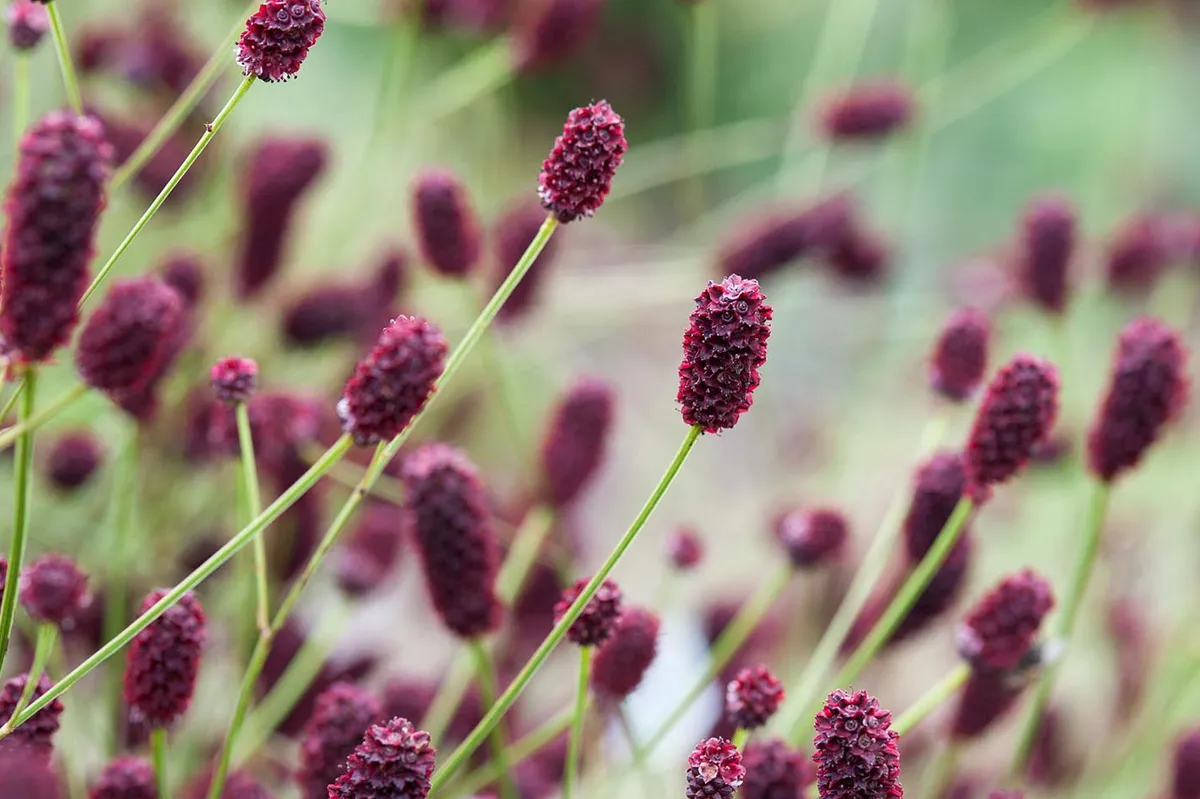
Vigorous and floriferous with slender stems, creating substantial clump It’s one of the seed samples (CDC 162) collected on the Korean expedition of 1993. 1.2m.
Sanguisorba tenuifolia ‘Purpurea’
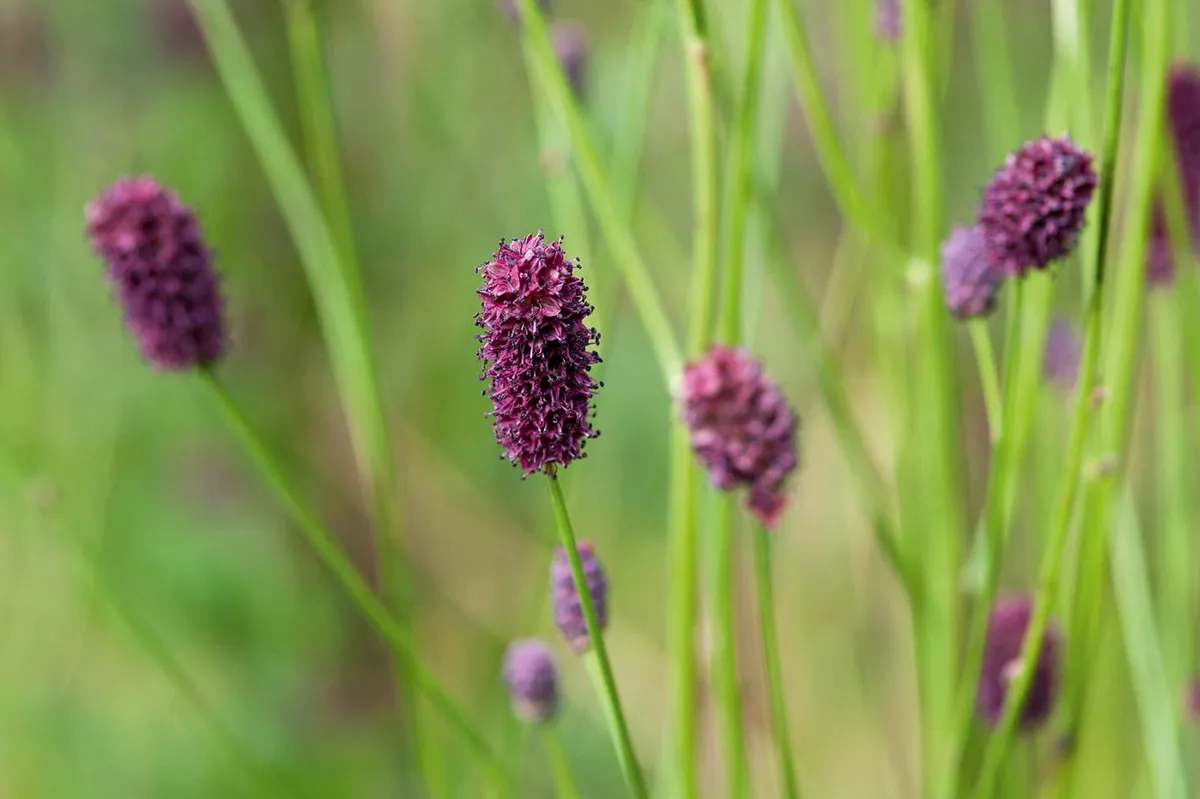
Smoky-pink, upright elongated burrs appear in late summer on robust stems. It has fresh apple-green foliage and provides a strong vertical accent and a tidy habit. 1.5m.
Sanguisorba ‘Candy Floss’
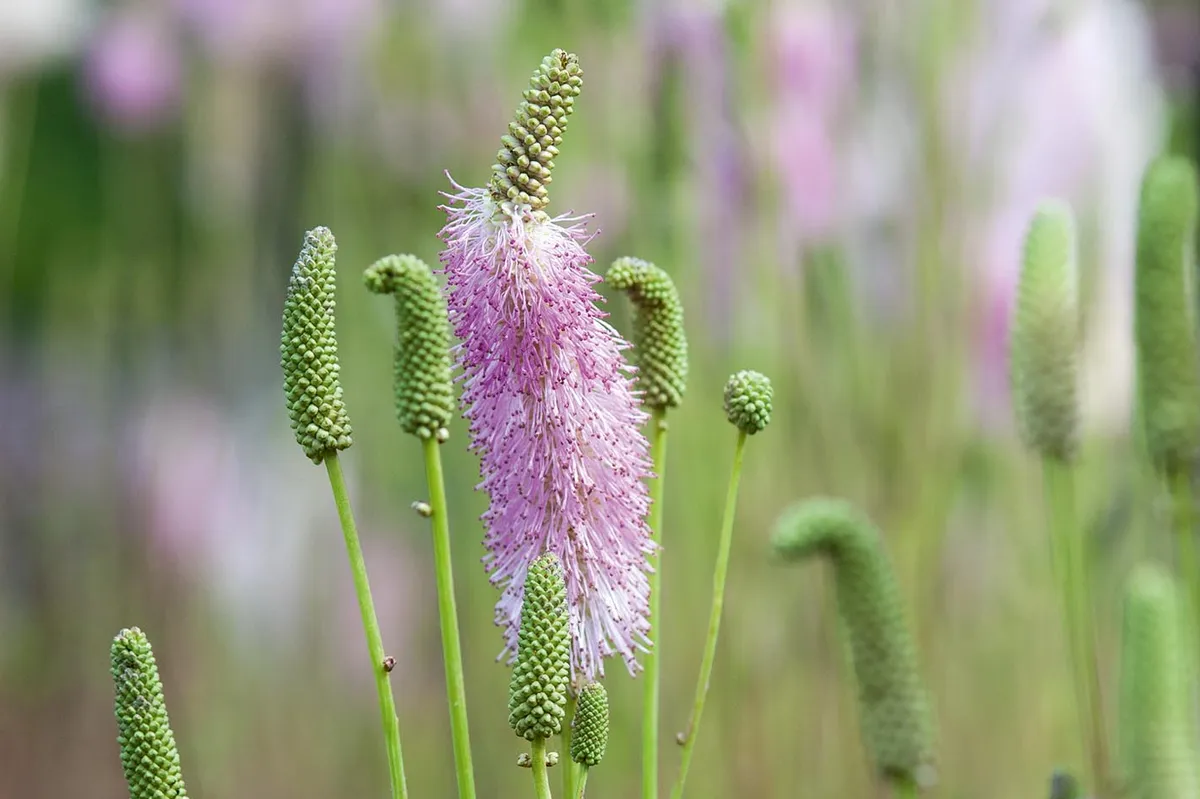
Large, fluffy, pink catkins open on upright candles, which are sweetly scented and attractive to butterfly pollinators. Beautiful when dry, dishevelled when wet with fresh-green foliage and red stems. 1.5m.
Sanguisorba ‘Misbourne Pink’
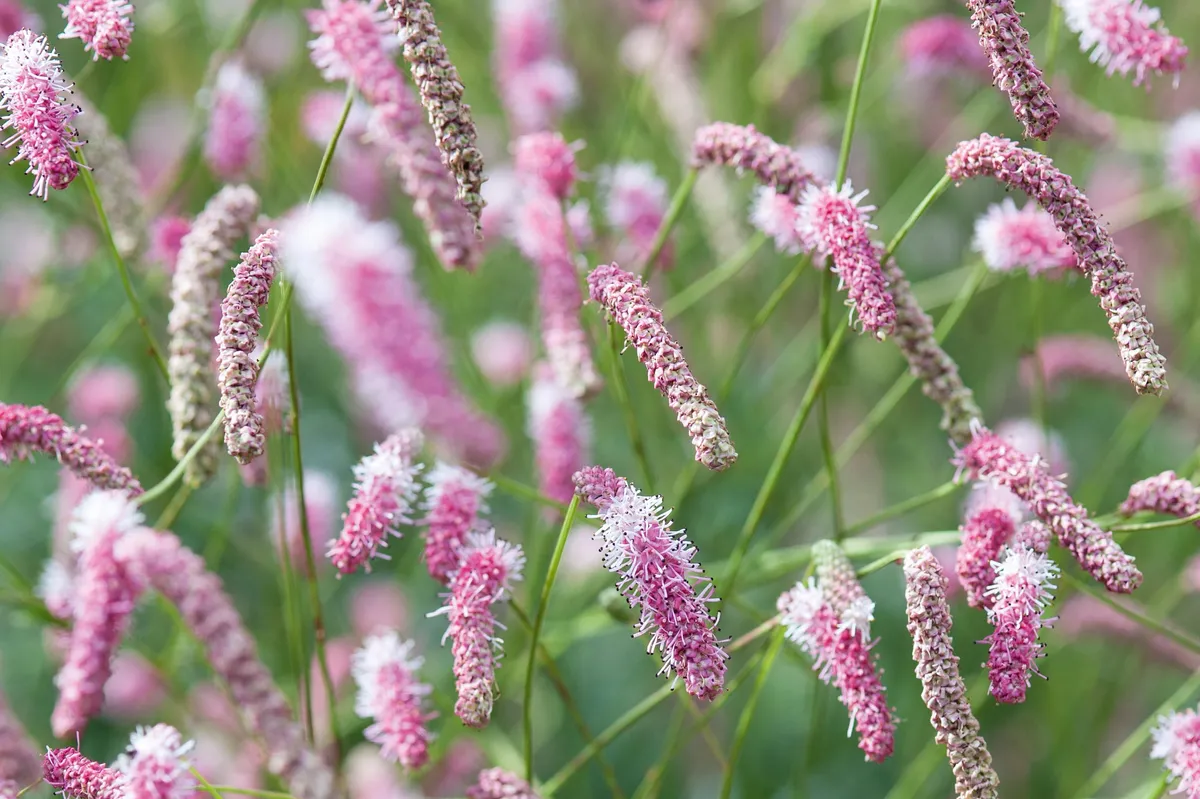
An early flowering hybrid seedling selected by Sean Walter of the Plant Specialist nursery. It has abundant, elegant pink flowers and glossy foliage. 1.5m. USDA 4a-8b.
Sanguisorba ‘Ivory Towers’
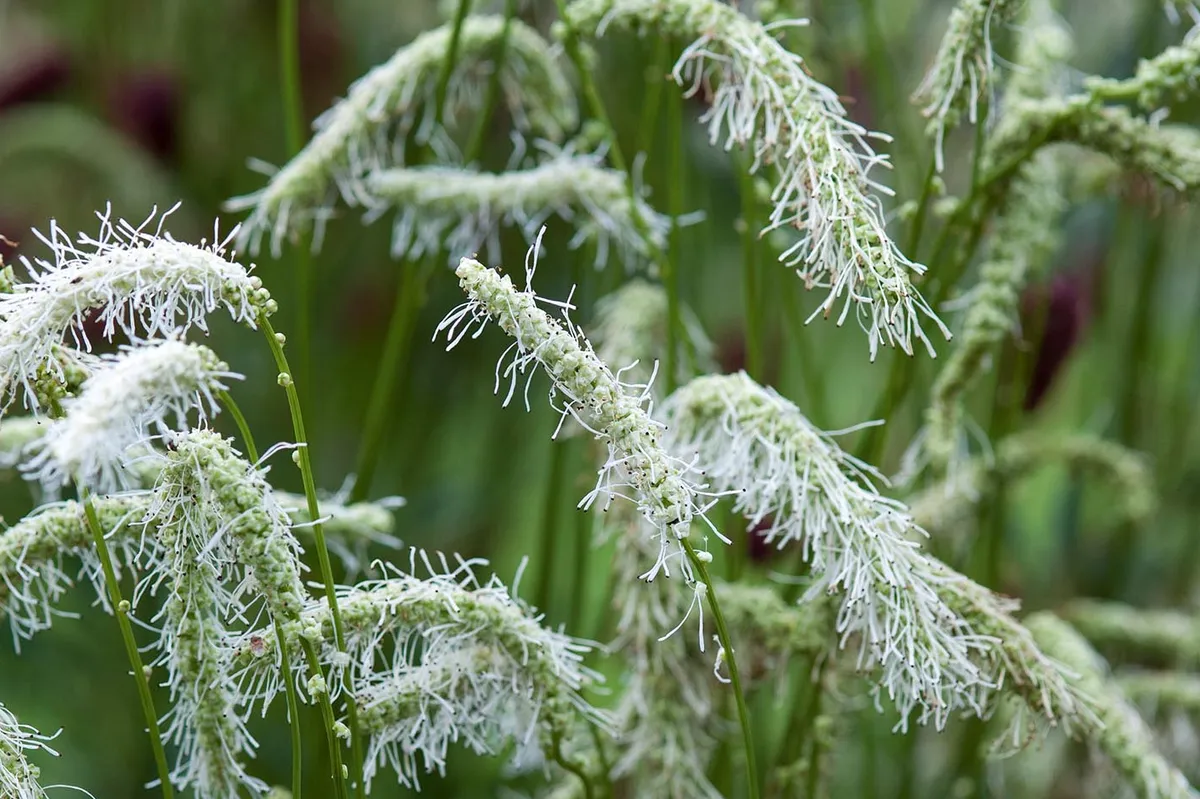
Early flowering in June, this hybrid has showy, nodding white catkins with black stamens. Discovered in a British nursery by Dutch nurseryman Coen Jansen. 1.2m.
Where to see and buy sanguisorba
- Avondale Nursery, Mill Hill, Baginton, Warwickshire CV8 3AG
- RHS Garden Wisley, Wisley Lane, Wisley, Woking, Surrey GU23 6QB
- Macplants, Berrybank Nursery, 5 Boggs Holdings, Pencaitland, East Lothian EH34 5BA
- Marchants Hardy Plants, 2 Marchants Cottages Mill Lane, Laughton, Lewes, East Sussex BN8 6AJ
- Phoenix Perennial Plants - open by appointment only, tel 01420 560695
- Pineview Plants, Pineview, 19 Windmill Hill, Wroxham Heath, Sevenoaks, Kent TN15 7SU
- The Plant Specialist, 7 Whitefield Lane, Great Missenden, Buckinghamshire HP16 0BH
- Sussex Prairie Garden, Morlands Farm, Wheatsheaf Road,nr Henfield, West Sussex, BN5 9AT
